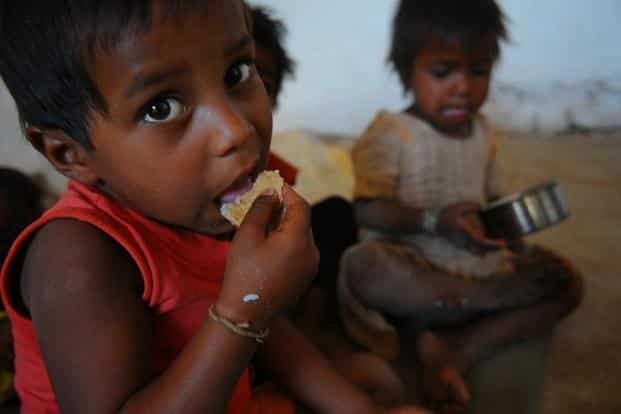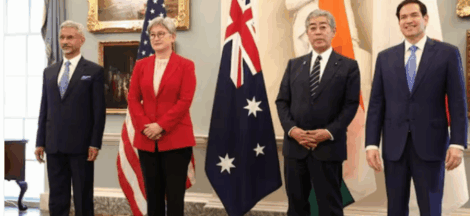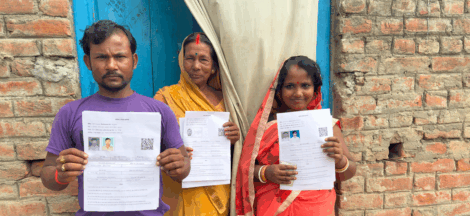By Dr. Gyan Pathak
Every third child in India continues to be undernourished, and a correlation exists between undernutrition rates with lower education rates and poverty. Moreover, the urban poor, in particular, remain highly vulnerable, despite numerous programmes being implemented, such as Poshan Abhiyan, Anganwadi services under ICDS, and mid-day meal for school children et al.
It has been revealed in an evidence-based data provided in an ADB working paper on “Addressing Nutrition Security in Urban India through Multisectoral Action” aiming at contributing to India’s National Urban Health Mission (NUHM) supported by the Asian Development Bank (ADB), through prescribing multisectoral interventions to mitigate malnutrition among the Indian urban population. This multisectoral perspective goes beyond the health sector, taking account issues on water supply, sanitation, sociocultural factors, food supply etc.
The paper covers malnutrition (undernutrition as well as overnutrition), its impact, determinants or causes, and solutions. It describes the problem’s impact on health and non-health sectors, identifies key determinants of malnutrition, and suggests specific solutions that can be practically applied as appropriate to the local contexts in the various urban areas of India.
Based on data, the paper has observed that every third child in India is underweight or stunted, and 21 per cent of children under five years are wasted. Moreover, every second child is anaemic. Common manifestations of malnutrition are protein-calorie malnutrition and micronutrient deficiencies.
Partial improvement has been observed for the period between the financial year 2005-06 and 2015-16, ie almost the preceding rule at the centre when Modi government has come to power in May 2014. Some measures of undernutrition had come down (e.g., prevalence of stunting, underweight among under-five children, women’s undernutrition as measured by BMI and by anaemia, and men’s anaemia rates). However, this was not the case for some indicators (e.g., wasting rates among under-five children seem to have actually worsened, though only marginally; women’s overweight rates had gone up, with a clearly alarming problem developing among the urban women; and overweight and obesity rates among men had gone up).
The paper has also observed that in spite of significant improvement, the target remain at low levels, which is a cause of serious concern, to the extent that childhood and maternal malnutrition continue to be public health problems (particularly the under-five stunting prevalence of 38.4% and underweight prevalence of 35.8%; as well as anaemia prevalence among 58.6% of under- five children, among 53.1% of women, and in 50.4% of pregnant women).
Undernutrition rates in urban areas are slightly lower than those in rural areas but far from acceptable, the paper says. In the urban populations, 31% of under-five children are stunted, 29.1% are underweight, and 20% are wasted. Similarly, anaemia prevalence in the urban population is also high at 56% among under-five children, 50.8% among women, and 45.8% among pregnant women.
Childhood immunization rates have improved but there is still considerable room for improvement, the authors of the paper have observed. Childhood immunization rates have improved from 44% to 62% nationally, and from 58% to 64% among the urban population. Immunization rates are significant in the context of nutrition, as childhood infections contribute to higher rates of undernutrition.
It is important to note that even in the highest wealth quintile, it was observed, 22% of under-five children are stunted, and 20% are underweight. This showsthat while poverty is one of the determinants of undernutrition, it is not the only factor, and a careful analysis will show other important causes that need to be addressed, such as household behaviors like eating, feeding and caring practices, access to health services, and personal hygiene and environmental sanitation, which are all affected by sociocultural factors.
The impact of malnutrition can become catastrophic when malnourished individuals live in a polluted environment with unsafe water and poor sanitation and living conditions. Both communicable diseases and NCDs are prevalent among the urban poor. In the poorer segments of society, it is not uncommon to find overweight and obese adults living with underweight children, amid widespread micronutrient deficiencies, the paper emphasized.
The paper has cited National Institute of Nutrition 2017 data that had found the prevalence of stunting among urban under-five children to be highest in Uttar Pradesh (close to 41%), followed by Maharashtra (36.4%), New Delhi (35.7%), and West Bengal (34.4%).
The National Institute of Nutrition had also found that the intake of green leafy vegetables, milk and milk products, and sugar and jaggery was lower than the level recommended by the Indian Council of Medical Research. Only half of the population within the 1–3-year-old bracket (56%), two-thirds (68%) of the population of 4–6-year-old children, and half of the population of pregnant women (56%) were consuming adequate amounts of protein and calories. As per the NFHS-4, 42% of mother-initiated breast feeding occurred within the first hour of delivery; and one-fourth of the mothers fed infants prelacteal feeds like honey, glucose or sugar water, or goat milk immediately after birth. The prevalence of hypertension was found to be 31% among urbanmen and 26% for women, being highest in Kerala (31%–39%) and lowest in Bihar (16%–22%).
Alongside undernutrition, overweight and obesity are also emerging rapidly in India, creating this double burden of overnutrition and undernutrition. Childhood obesity is becoming an issue even among the urban poor, with childhood obesity as a known precursor to obesity and other NCDs in adulthood. With 14.4 million obese children, India has the second highest number of obese children in the world, next to the People’s Republic of China. Childhood obesity is likely to be a serious public health problem in India, especially in the urban population, the paper warned.
Overnutrition is worse among the adults. Some 31.3% of women and 26.6% of men are overweight or obese in the urban areas. A growing adult obesity among the urban poor along with comorbidities either diabetes or hypertension, require lifestyle changes and appropriate nutrition. This requires programmes designed in a rational and scientific way by experienced social scientists who must be recruited under the NUHM, and coordination between the nutrition program and NCD control programs.
There is a clear urgency of addressing malnutrition in urban areas which is accentuated by the fact that non-communicable diseases are on the rise. The paper mentions poor infrastructure, fragmented and uncoordinated health service delivery system, suboptimal financing, lack of coordination among stakeholders and agencies, pavement dwellers and migrant population, paucity of human resources, unequal distribution of resources etc as the major challenge in effectively tackling the problem. The challenges in the context of nutrition programmes included absence of well-defined target areas, poor work and living conditions, exclusion of urban poor from accessing quality services like nutrition, health, water, sanitation, education and protection, food insecurity and poor diets, and lack of financial protection. (IPA Service)




 Parallels Seen With Stagnation After Invasion Of Czechoslovakia
Parallels Seen With Stagnation After Invasion Of Czechoslovakia 